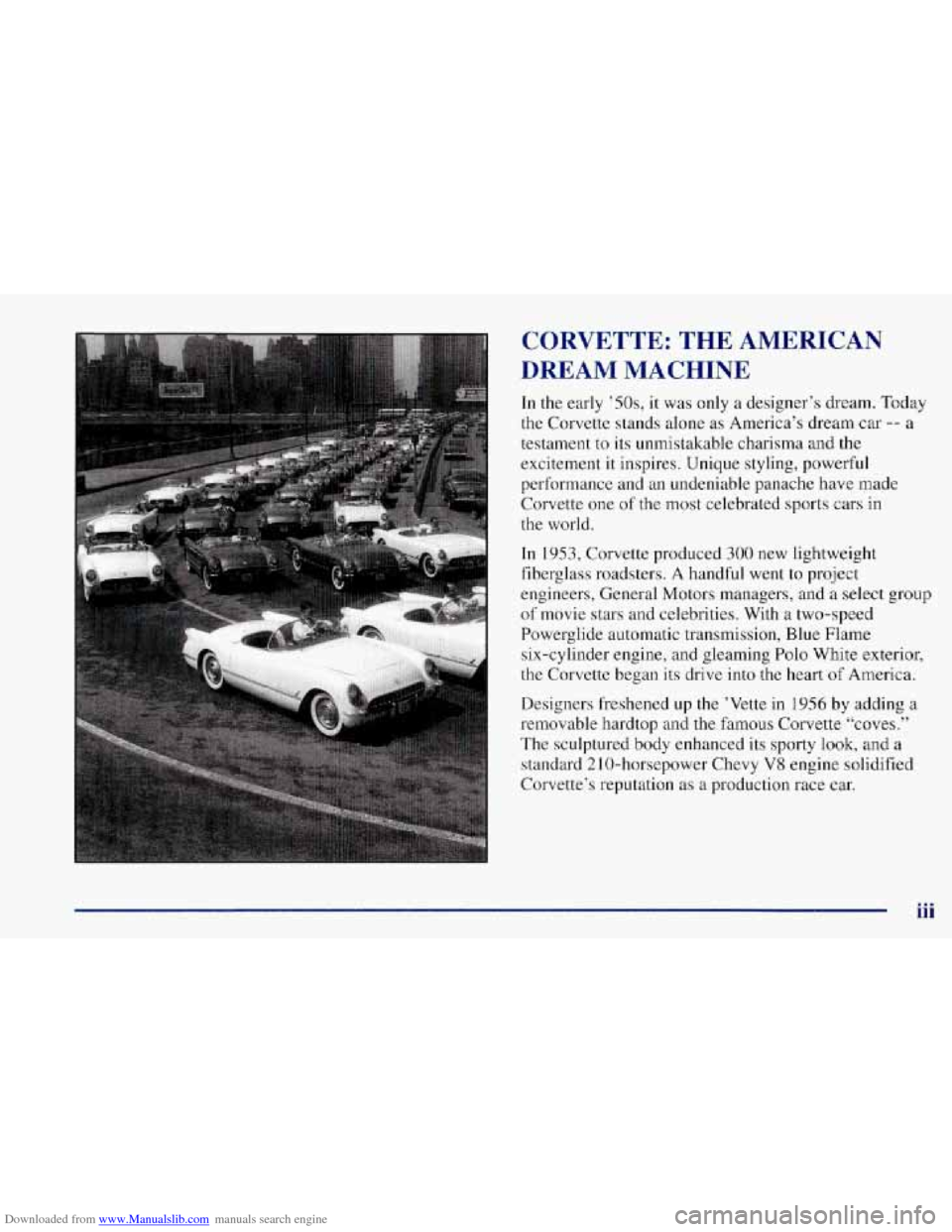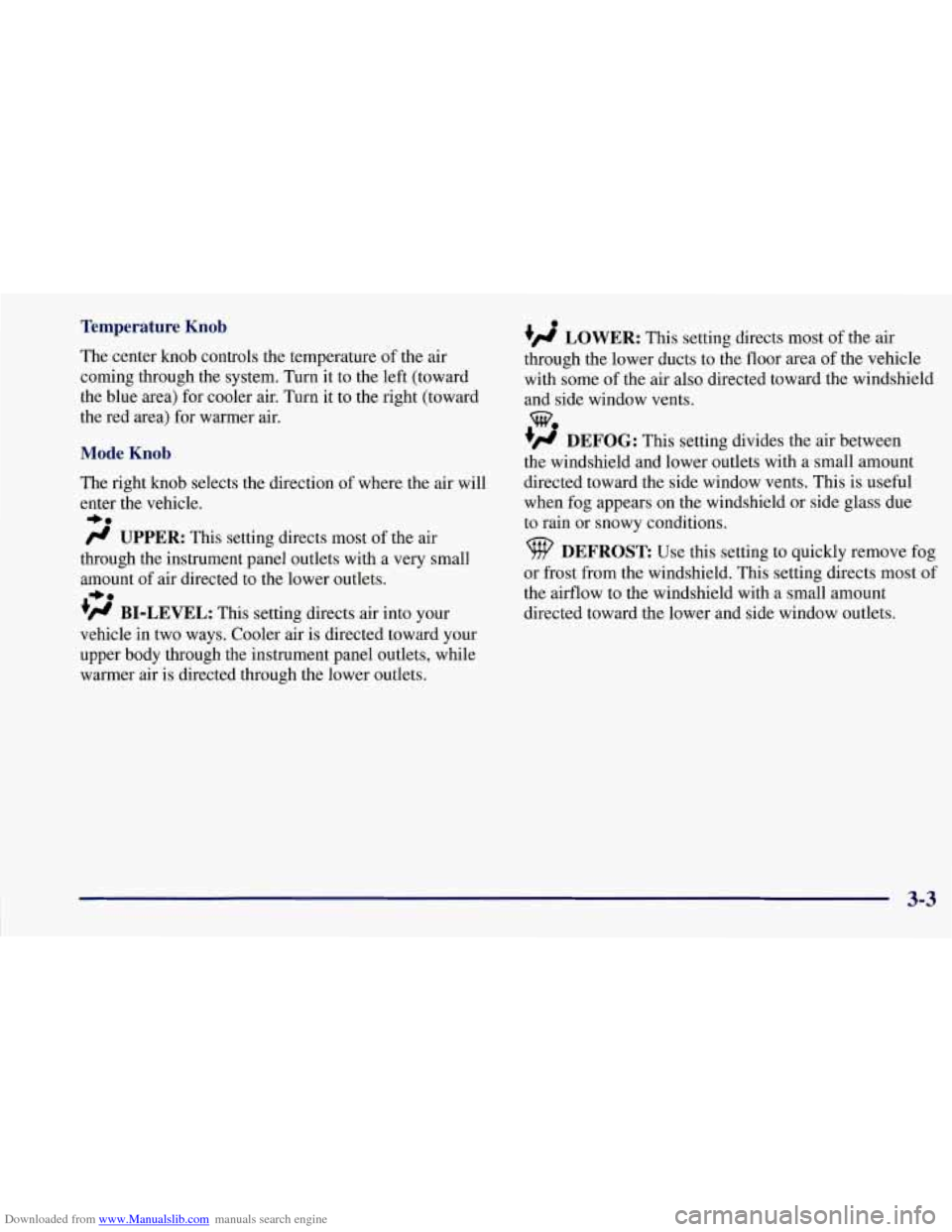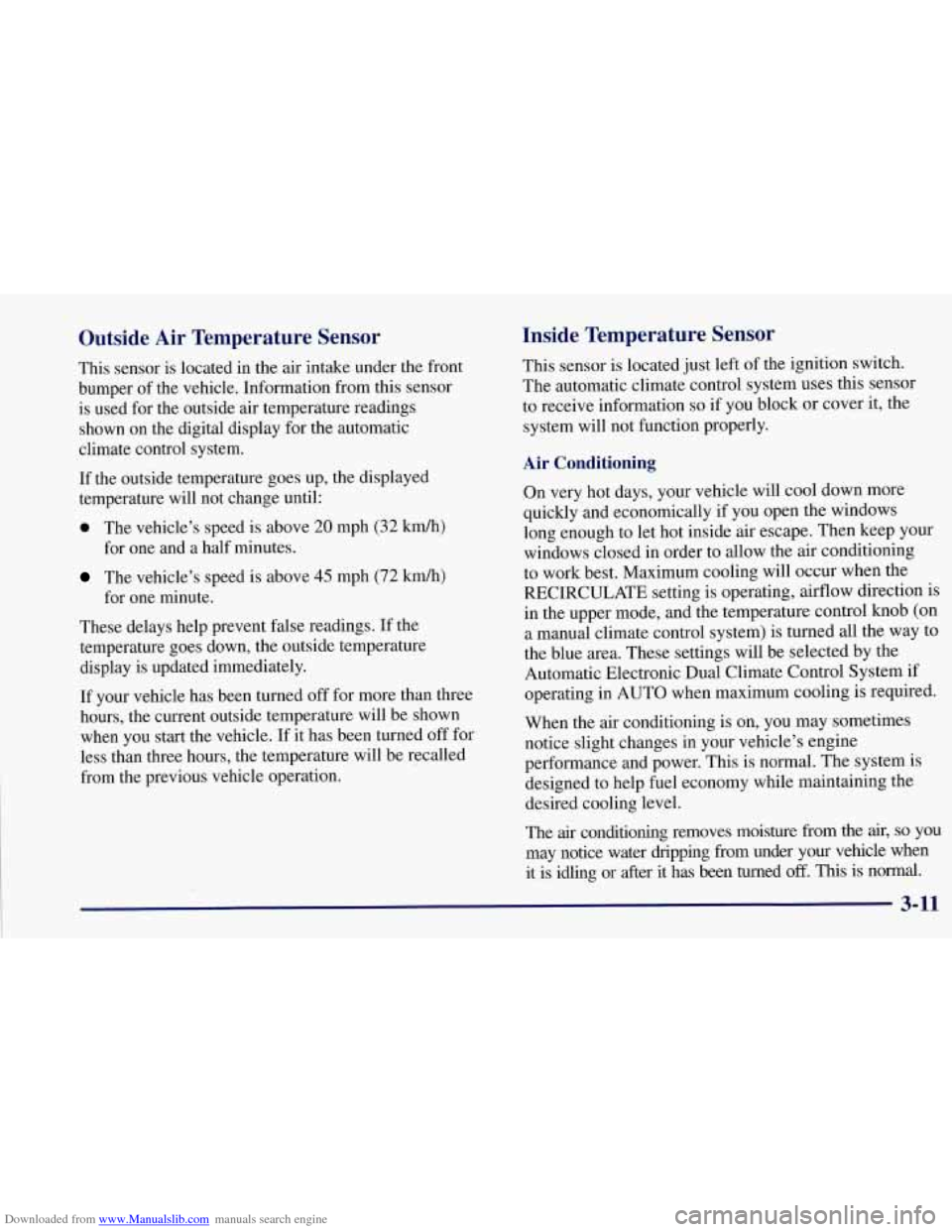Page 4 of 356

Downloaded from www.Manualslib.com manuals search engine CORVETTE: THE AMERICAN
DREAM MACHINE
In the early ’50s, it was only a designer’s dream. Today
the Corvette stands alone
as America’s dream car -- a
testament
to its unmistakable charisma and the
excitement
it inspires. Unique styling, powerful
performance and an undeniable panache have made
Corvette one
of the most celebrated sports cars in
the world.
In 1953, Corvette produced 300 new lightweight
fiberglass roadsters.
A handful went to project
engineers, General Motors managers, and a select group
of movie stars and celebrities. With a two-speed
Powerglide automatic transmission, Blue Flame
six-cylinder engine, and gleaming Polo White exterior,
the Corvette began its drive into the heart of America.
Designers freshened up the ’Vette in
1956 by adding a
removable hardtop and the famous Corvette “coves.”
The sculptured body enhanced its sporty
look, and a
standard 210-horsepower Chevy V8 engine solidified
Corvette’s reputation as a production race car.
ii i
Page 150 of 356

Downloaded from www.Manualslib.com manuals search engine Temperature Knob
The center knob controls the temperature of the air
coming through the system. Turn it to the left (toward
the blue area) for cooler air. Turn it to the right (toward
the red area) for warmer air.
Mode Knob
The right knob selects the direction of where the air will
enter the vehicle.
+*
/J UPPER: This setting directs most of the air
through the instrument panel outlets with a very small
amount of air directed to the lower outlets.
+’ BI-LEVEL: This setting directs air into your
vehicle in two ways. Cooler air is directed toward your
upper body through the instrument panel outlets, while
warmer air is directed through the lower outlets.
+e a
+’ LOWER: This
.setting directs most of the air
through the lower ducts to the floor area of the vehicle
with some of the air also directed toward the windshield
and side window vents.
+fl DEFOG: This setting divides the air between
the windshield and lower outlets with a small amount
directed toward the side window vents. This is useful
when fog appears on the windshield or side glass due
to rain or snowy conditions.
we
DEFROST: Use this setting to quickly remove fog
or frost from the windshield. This setting directs most of
the airflow to the windshield with a small mount
directed toward the lower and side window outlets.
3-3
Page 158 of 356

Downloaded from www.Manualslib.com manuals search engine Outside Air Temperature Sensor
This sensor is located in the air intake under the front
bumper of the vehicle. Information from this sensor
is used for the outside air temperature readings
shown on the digital display for the automatic
climate control system.
If the outside temperature goes up, the displayed
temperature will not change until:
0 The vehicle’s speed is above 20 mph (32 km/h)
for one and a half minutes.
The vehicle’s speed is above 45 mph (72 km/h)
for one minute.
These delays help prevent false readings.
If the
temperature goes down, the outside temperature
display is updated immediately.
If your vehicle has been turned off for more than three
hours, the current outside temperature will be shown
when you start the vehicle.
If it has been turned off for
less than three hours, the temperature will be recalled
from the previous vehicle operation.
Inside Temperature Sensor
This sensor is located just left of the ignition switch.
The automatic climate control system uses this sensor
to receive information
so if you block or cover it, the
system will not function properly.
Air Conditioning
On very hot days, your vehicle will cool down more
quickly and economically if you open the windows
long enough to let hot inside air escape. Then keep your
windows closed in order to allow the air conditioning
to work best. Maximum cooling will occur when the
RECIRCULATE setting is operating, airflow direction is
in the upper mode, and the temperature control knob (on
a manual climate control system) is turned all the way to
the blue area. These settings will be selected by the
Automatic Electronic Dual Climate Control System if
operating in AUTO when maximum cooling is required.
When the
air conditioning is on, you may sometimes
notice slight changes in your vehicle’s engine
performance and power. This is normal. The system
is
designed to help fuel economy while maintaining the
desired cooling level.
The
air conditioning removes moisture from the air, so you
may notice water dripping from under your vehicle when
it is idling or after it has been turned
off. This is normal.
3-11